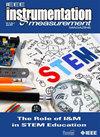Fundamentals in Measurement: The Role of Measurement Uncertainty in Conformity Assessment: Some Examples
IF 1.6
4区 工程技术
Q3 ENGINEERING, ELECTRICAL & ELECTRONIC
引用次数: 0
Abstract
The statements of conformity are widely spread in testing, inspection, and calibration fields and are essential to ensure that products, materials, services, and systems comply with established standards, regulations, and legal requirements. In calibration, this activity consists of the comparison of the measurement results within the defined limits (e.g., specifications). This task can be very challenging when the measurement result is close to the limit, making it difficult to take a decision on compliance (or noncompliance) with respect to the limits. Measurement uncertainty introduces the risk that the actual value of the measurand is out of specification even if the measured value falls within the specification limits, leading to the Probability of False Acceptance (PFA), or is in specification even if the measured value falls outside, causing the Probability of False Rejection (PFR). The way in which measurement uncertainty is taken into account when declaring compliance with a specific requirement is called “decision rule” and is defined according to the risk that researchers are willing to accept. In general, the decision rule can take measurement uncertainty into account either directly, by guard banding, or indirectly, such as by imposing an upper limit on measurement uncertainty (e.g., through defining the ratio between specification and measurement uncertainty).测量基础:测量不确定性在合格评定中的作用:一些实例
合格声明广泛应用于测试、检验和校准领域,对于确保产品、材料、服务和系统符合既定标准、法规和法律要求至关重要。在校准中,这项活动包括在规定的范围内(如规格)比较测量结果。当测量结果接近限值时,这项工作就会变得非常具有挑战性,从而难以确定是否符合(或不符合)限值。测量不确定性带来的风险是,即使测量值在规格限制范围内,被测量物的实际值也可能不符合规格,从而导致错误接受概率 (PFA),或者即使测量值不符合规格,被测量物的实际值也可能符合规格,从而导致错误拒绝概率 (PFR)。在宣布符合特定要求时考虑测量不确定性的方式称为 "决策规则",它是根据研究人员愿意接受的风险来定义的。一般来说,决策规则可以直接考虑测量的不确定性,如通过保护带,或间接考虑测量的不确定性,如规定测量不确定性的上限(如通过定义规格和测量不确定性之间的比率)。
本文章由计算机程序翻译,如有差异,请以英文原文为准。
求助全文
约1分钟内获得全文
求助全文
来源期刊

IEEE Instrumentation & Measurement Magazine
工程技术-工程:电子与电气
CiteScore
4.20
自引率
4.80%
发文量
147
审稿时长
>12 weeks
期刊介绍:
IEEE Instrumentation & Measurement Magazine is a bimonthly publication. It publishes in February, April, June, August, October, and December of each year. The magazine covers a wide variety of topics in instrumentation, measurement, and systems that measure or instrument equipment or other systems. The magazine has the goal of providing readable introductions and overviews of technology in instrumentation and measurement to a wide engineering audience. It does this through articles, tutorials, columns, and departments. Its goal is to cross disciplines to encourage further research and development in instrumentation and measurement.
 求助内容:
求助内容: 应助结果提醒方式:
应助结果提醒方式:


